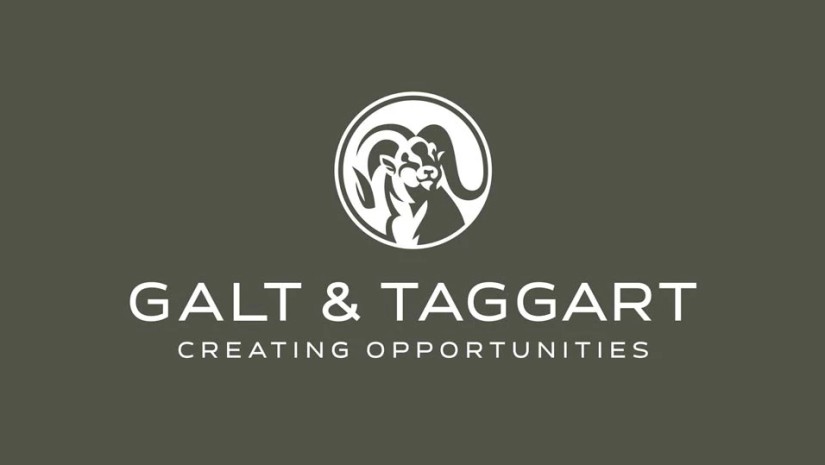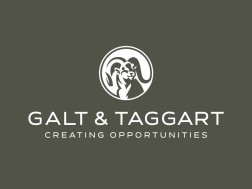Galt&Taggart published the Global Markets Weekly Update. According to the document,
USA
Markets Overview:
Wall Street witnessed a record-breaking week, primarily driven by the latest consumer inflation data. On Wednesday, the headline consumer price index (CPI) for April increased at a slower-than-anticipated rate, while the core CPI cooled for the first time since October 2023.
Following the data, markets were off to the races as investors ramped up their Federal Reserve interest rate-cut bets. The positive sentiment pushed the benchmark S&P 500 (SP500) above the 5,300-point level for the first time ever. The post-CPI euphoria stalled somewhat over
the final two days of the week, but a stellar earnings report from Walmart (WMT) was enough of a catalyst to push the venerable Dow Jones Industrial Average (DJI) past 40,000 points on Thursday in a historic first. For the week, the S&P 500 (SP500) added +1.5%, the blue-chip
Dow (DJI) rose +1.2%, and the tech-heavy Nasdaq Composite (COMP:IND) climbed +2.1%.
Corporate news:
Walmart
Walmart exceeded expectations for quarterly earnings and revenue, bolstered by significant e-commerce gains, new business ventures like advertising, and an influx of high-income shoppers. The company now anticipates meeting or surpassing its full-year guidance. Shares
surged to a record high, closing 7% up. CFO John David Rainey highlighted that the growing price gap between home-cooked meals and restaurant food has boosted Walmart's grocery sales. Additionally, Walmart's delivery business overtook store pickups in volume, attracting
new and frequent customers to both its online and physical stores. For the fiscal first quarter, Walmart reported adjusted earnings per share of 60 cents versus the expected 52 cents and revenue of $161.51 billion against the anticipated $159.50 billion. Walmart's net income soared to $5.10 billion, up from $1.67 billion the previous year, with revenue climbing 6% year over year. U.S. same-store sales rose 3.8%, and e-commerce sales increased by 22%, driven by online order deliveries and the company's third-party marketplace. Despite a flat average ticket, the number of transactions grew 3.8%. CEO Doug McMillon noted modest inflationary pressure and emphasized Walmart's focus on expanding its online presence and diversifying its product offerings. New initiatives like a private-label grocery brand and store renovations have contributed to attracting younger and more affluent customers. Walmart's efforts to grow its advertising and subscription services, along with the robust performance of its marketplace, have significantly boosted profits.
Reddit:
Reddit Shares surged more than 10% On Friday after announcing a partnership with OpenAI. This collaboration allows OpenAI to train its AI models on Reddit content via Reddit’s Data API, offering real-time, structured data. In return, Reddit will integrate AI features for users and moderators powered by OpenAI, which will also become a Reddit advertising partner. This partnership leverages Reddit's vast archive of human conversations to enhance AI capabilities, providing more relevant and connected content. OpenAI CEO Sam Altman, a major Reddit shareholder, and COO Brad Lightcap led the deal. The partnership aligns with OpenAI’s recent launch of the faster and more capable GPT-4 model, expanding AI functionalities for a wider audience.
GameStop:
Shares in GameStop and AMC Entertainment surged for a second straight session on Tuesday, driven by a renewed "meme stock" rally sparked by the re-emergence of day trader Keith Gill, known as "Roaring Kitty." GameStop's shares soared 60% and AMC's 32% on Tuesday, following substantial gains of 73% and 77% on Monday, respectively. Trading in GameStop was temporarily halted three times due to volatility within the first 20 minutes. The rally began after Gill, who was instrumental in the pandemic-era meme stock surge, reappeared on social media after a three-year hiatus. His ambiguous posts led to renewed enthusiasm among retail traders, who drove the prices of meme stocks, including GameStop and AMC, to new highs. Dhruv Chand Aggarwal, a law professor at Northwestern, noted that GameStop and AMC remain symbolic of the meme stock movement. By the end of the week, however, shares of GameStop were down more than 70% from the peak price achieved on Tuesday.
Next Week:
The spotlight next week will be garnered by Nvidia (NVDA). The chip giant and perceived leader of the artificial intelligence (AI) space is scheduled to announce fiscal first quarter earnings on Wednesday. Expectations are sky-high, especially with the Jensen Huang-led firm having repeatedly delivered blowout quarterly reports showing massive demand for its AI chips. Its results will act as a barometer for the AI craze, and another strong performance could help Wall Street to new record highs.
Wednesday will also see the release of the minutes of the Federal Reserve's April/May monetary policy meeting. However, market participants could receive comments on policy as early as tomorrow, with Fed chair Jerome Powell set to deliver commencement remarks to Georgetown University Law Center via prerecorded video.
Earnings this week:
Monday, May 20 - Palo Alto Networks (PANW), Li Auto (LI), and Zoom Video (ZM). See the full earnings calendar.
Tuesday, May 21 - Lowe's Companies (LOW), Autozone (AZO), Toll Brothers (TOL), XPeng (XPEV), Macy's (M), and Amer Sports (AS).
Wednesday, May 22 - Nvidia (NVDA), TJX Companies (TJX), Analog Devices (ADI), Target (TGT), Snowflake (SNOW), Petco Health and Wellness (WOOF), and e.l.f. Beauty (ELF).
Thursday, May 23 - Intuit (INTU), Medtronic (MDT), Toronto-Dominion Bank (TD), Ralph Lauren (RL), and Workday (WDAY).
Friday, May 24 - Booz Allen Hamilton (BAH) and Buckle (BKE).
Europe
UK pay growth still strong, but Wieladek says looser labor market means June rate cut possible
In local currency terms, the pan-European STOXX Europe 600 Index rose 0.42% but slipped from the record high hit during the week.
Cautious comments from European Central Bank (ECB) members appeared to cool optimism about the extent to which monetary policy might ease this year. Major stock indexes were mixed. Germany’s DAX fell 0.36%, while France’s CAC 40 Index declined 0.63%. Italy’s FTSE MIB advanced 2.14%. In the UK, the FTSE 100 Index finished modestly lower.
The annual rate of pay growth, excluding bonuses, was unchanged at 6% in the three months through March, which was slightly higher than forecast. In the private sector, regular pay growth came in at 5.9%, slightly less than expected by the Bank of England, which monitors the measure. The labor market, however, appeared to slacken. The main unemployment rate rose to 4.3%, while job openings declined for a 22nd consecutive month.
European Economist Tomasz Wieladek believes that, overall, the data tentatively support a reduction in interest rates in June, as a transition to a looser labor market appears now to be underway. However, he cautions that policymakers will need to digest a few more data releases before deciding whether to ease rates.
ECB policymakers advocate caution on rate path.
ECB policymakers Francois Villeroy de Galhau, Madis Muller, and Martins Kazaks indicated that a rate cut is likely in June but that the path thereafter is uncertain. Executive Board member Isabel Schnabel told the Nikkei newspaper that the current data did not justify another reduction in July, in part because the disinflation process appears to have slowed significantly. Belgian central bank Governor Pierre.
Wunsch told the Handelsblatt newspaper “the first half a percentage point of interest rate cuts is close to a no brainer” but slower policy easing by the Federal Reserve could delay further moves. He stressed that he was not backing a second rate cut in July.
Eurozone industrial output rises for second month.
Eurozone industrial production rose for a second month running in March, increasing 0.6% sequentially. However, the stronger-than-expected reading was driven by a jump in Ireland’s output, a data point that historically has been quite volatile.
Japan
Economic growth contracts more than expected
Japanese equities finished the week higher, with the Nikkei 225 Index gaining 1.5% and the broader TOPIX Index up 0.6%. This was despite a backdrop of economic weakness and a range-bound yen on expectations of U.S. interest rate cuts in contrast to tentative hawkishness on the part of the Bank of Japan (BoJ), the latter also sending Japanese government bond (JGB) yields modestly higher.
Investors appeared to shrug off weakness in Japan’s economy, as signaled by a weaker-than-expected first-quarter gross domestic product print—a 2.0% annualized contraction on the previous three-month period—which was driven in part by the negative impact on growth of the earthquake that hit the Noto peninsula in January, as well as the suspension of some auto production activity. Other areas of weakness included capital expenditure and external demand, while, conversely, strength in public demand and private inventories lent support.
Yen range-bound amid expectations of reduced interest rate differential.
The yen finished the week broadly unchanged in the high-JPY 155 range against the USD. This was within the context of expectations that the U.S. Federal Reserve could cut interest rates twice this year, while the BoJ is widely anticipated to embark on further monetary policy normalization—thereby leading to a reduced interest rate differential between the two economies. Such an eventuality could lend support to the yen, which continues to languish at historic lows despite investors converging around the view that Japanese authorities recently intervened twice in the foreign exchange markets to prop up the currency.
BoJ reduces bond purchases, exerting modest upward pressure on yields.
The yield on the 10-year JGB rose to 0.94%, from 0.91% at the end of the previous week. Upward pressure on yields was at least temporarily exerted by hawkish signals from the BoJ, as it reduced the amount of JGBs it offered to buy in a regular purchase operation.
However, a reduction in purchases had been widely anticipated, which meant that the rise in yields was only modest.
China
Chinese equities were little changed after the central government unveiled on Friday a historic rescue package to stabilize the country’s ailing property sector. The Shanghai Composite Index was broadly flat, while the blue chip CSI 300 added 0.32%. In Hong Kong, the benchmark Hang Seng Index gained 3.11%, according to FactSet.
The People’s Bank of China (PBOC) lowered the minimum down payment ratio by 5% to 15% for first-time buyers and to 25% for second home purchases in an attempt to ignite demand. The PBOC also said that it would scrap the nationwide floor level of mortgage rates and allow cities to make their own decisions on what mortgage rates to charge. Under a so-called re-lending program, the central bank said it would extend RMB 300 billion in low-cost funds to a select group of state-owned banks to lend to local state-owned entities for the purchase of unsold homes.
The unprecedented support package came as data showed no sign of turnaround in China’s yearslong housing crisis. New home prices in China fell by 0.6% month on month in April, according to the statistics bureau, marking the 10th straight monthly decline and the steepest drop since November 2014. Real estate investment fell a higher-than-expected 9.8% in the January-to-April period from a year earlier, following a 9.5% drop in the first quarter.
Inflation data showed that deflationary pressure continued to weigh on China’s economy. China’s consumer price index rose 0.3% in April from a year ago, accelerating from March’s 0.1% increase and marking the third consecutive positive reading. However, the producer price index fell 2.5% from a year ago compared with a 2.8% drop in March.
Other data also showed an uneven recovery for China’s economy. Industrial production rose an above-forecast 6.7% in April from a year earlier, accelerating from March’s 4.5% increase. However, fixed-asset investment and retail sales both increased less than expected, underscoring anemic domestic demand. The urban unemployment rate fell to 5.0% from 5.2% in March.














